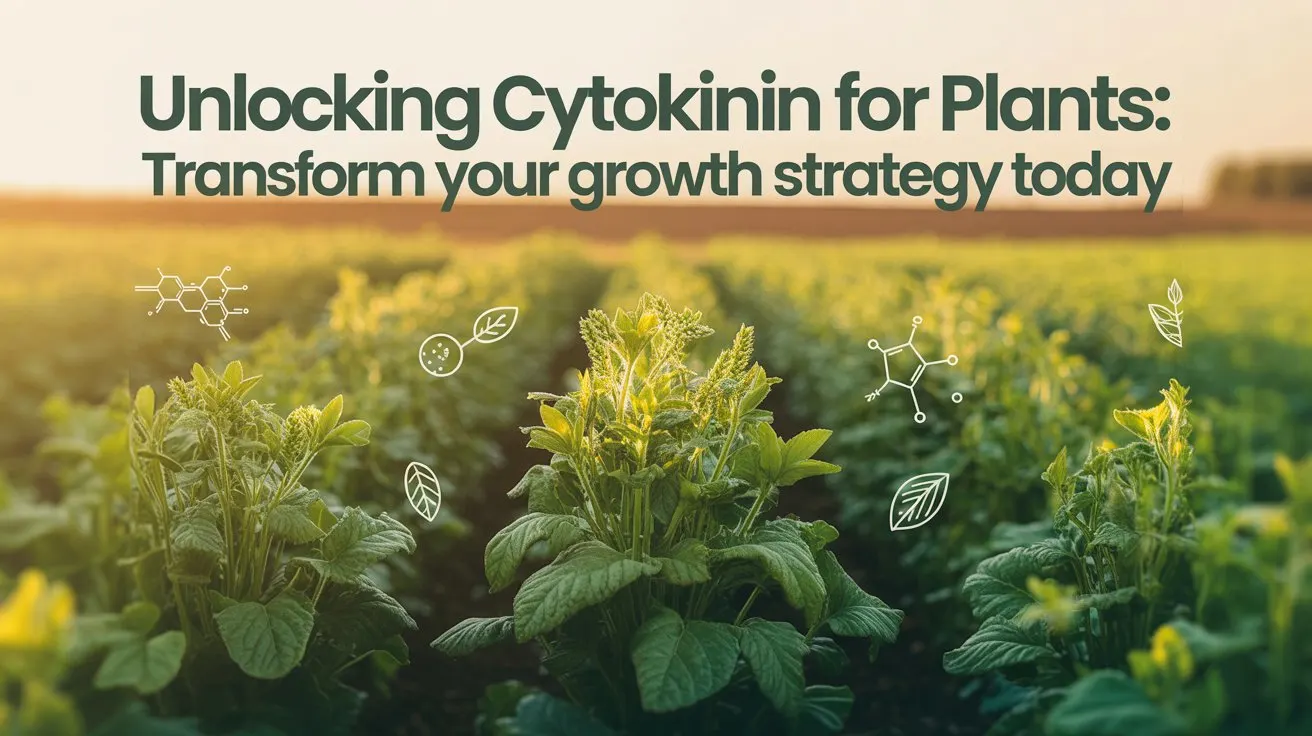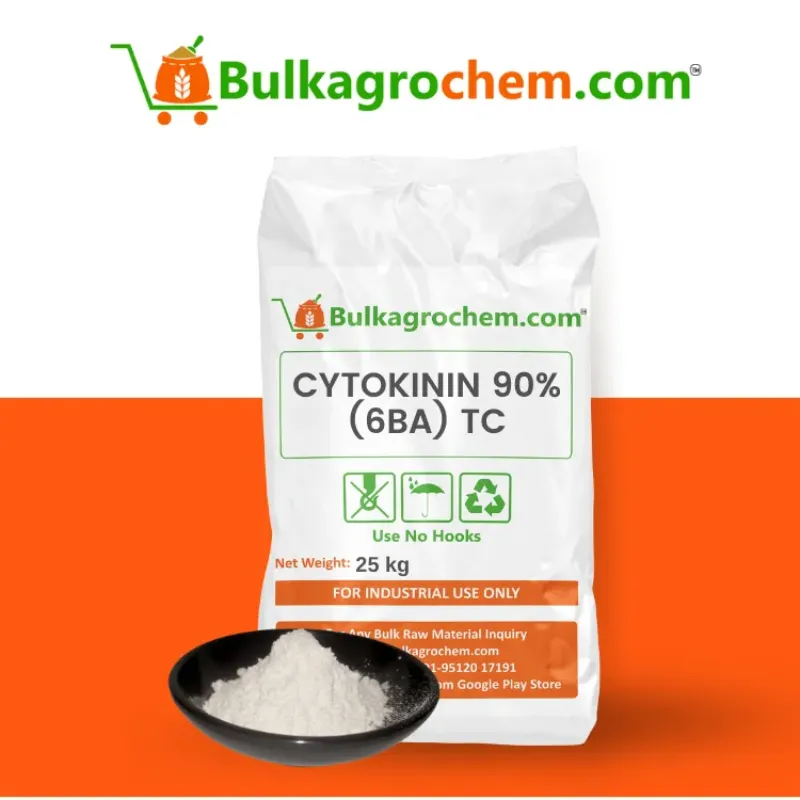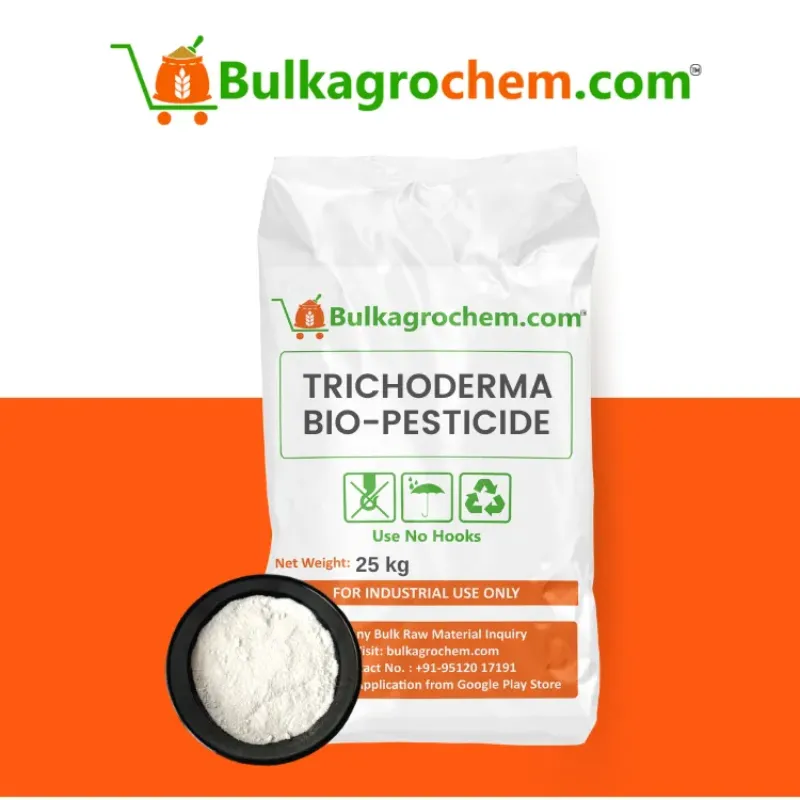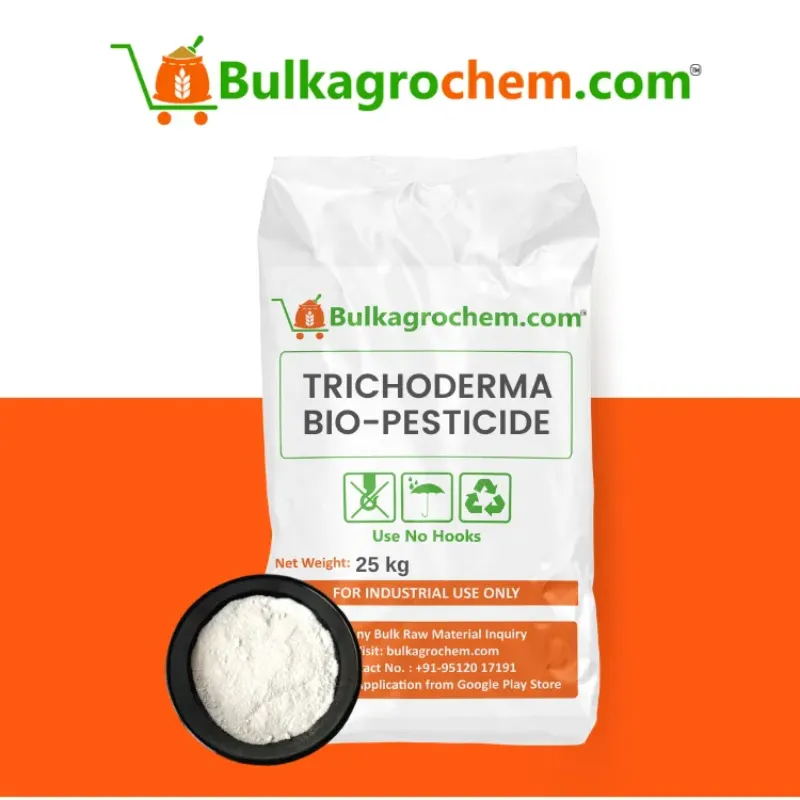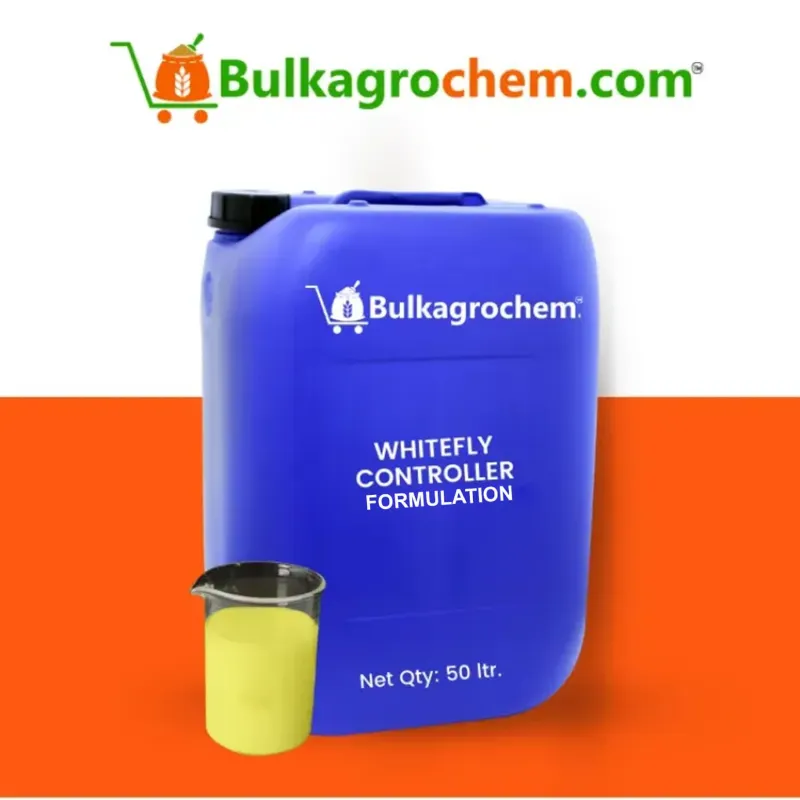Cytokinins are a critical cytokinin hormone in plants that regulates cell division and differentiation to create healthy shoots and trigger delayed leaf senescence. When applied in plants, cytokinins produce multiple shoot/branching, improved nutrient movement in the plant, and increased productive life in patient's leaves, all of which are vital to increase total plant biomass or yield.
When applied at the correct growth stages, cytokinins signal meristematic tissues to divide and tie and enormously fuller canopies with stronger flowers or fruit. Including cytokinins into the crop management plan makes it an active growth strategy vs. simply feeding, essentially deciding where (tissue) and when (timing) the energy will be active.
Natural and synthetic formulations of cytokinins for plants can vary widely in activity (e.g. 0-modern specially manufactured from water can can be 100 eligible for liquid fertilizer, but contain an undisclosed amount of cytokinin YN for saint and the latest products carry little if any plant cytokinin activity.) In all modern formulation determination, marketed formulations provide high levels of activity in many environmental circumstances.
Whether increasing quality in vegetable transplants, enhancing blooms in ornamentals, or increasing the productive capacity of field-crop based farming, understanding the uses of cytokinins provides predictable, quality occurring results, and enforcement particulars and ultimately decreases risk. Let us help provide your operation with a new strategy for growth.
Introduction: What Is Cytokinin in Plants and Why It Matters
Cytokinins refer to a class of plant growth regulators that are central to cell division, shoot initiation, and delaying senescence in leaves. As plant growth hormones, cytokinins are chemical messengers that coordinate nutrient transport and developmental timing. Growers should care about understanding cytokinins in plants because they can influence branching patterns, canopy density, and overall plant vigor.
Defining cytokinin for plants as a key plant growth regulator
Cytokinin for plants is defined as natural or synthetic chemical compounds, like zeatin, benzylaminopurine (BAP), and kinetin, that are similar to naturally occurring cytokinins.
- Cytokinins bind to specialized receptor histidine kinases located on the endoplasmic reticulum and initiate phosphorelay signaling cascades.
- The phosphorelay of response regulators leads to gene expression that generates mitotic cycles for tissue from meristematic tissues.
- Cytokinins control cell proliferation, which ultimately affects organogenesis, leaf expansion and the sink–source status of the plant.
Overview of cytokinin hormone in plants and its developmental roles
Cytokinin functions as a hormone in plants and serves multiple growth functions:
- Shoot vs. root balance: Cytokinins increase shoot branching when levels are high and increase root elongation when levels are low.
- Delayed senescence: Cytokinins delay the senescence of chlorophyll and protein synthesis in older leaves.
- Nutrient redistribution: Cytokinins also signal nutrients to be mobilized and redistributed to developing tissues, ready to supply developing buds and fruits when nutrients become available.
With this range of functions, it is no wonder that cytokinins are vital factors for both vegetative growth and reproductive success.
How cytokinin in plants balances auxin and gibberellin effects
Cytokinins work with auxins and plant growth hormones like auxins and gibberellins to maintain the balance of development:
- Auxin-cytokinin role: Auxins promote root initiation, while cytokinins promote shoot proliferation, and the ratio between the two hormones identifies root-shoot architecture.
- Gibberellins: Gibberellins induce stem elongation and flowering; however,(the cytokinins ensure) responding to gibberellins, the cells in the plant are ready to divide and expand.
- Hormonal interaction: Rational crop management uses all the hormones effectively, through the ability of cytokinin to fine-tune the interactions, enhancing biomass production forever more, without compromising structural integrity or timing of reproductive development..
The Science Behind Cytokinin Hormone in Plants: Promoting Cell Division
Cytokinins are the primary regulators of cell division to function like the cytokinin hormone in plants that directly affect meristem activity and organogenesis. By understanding their signalling and interactions, growers can take advantage of cytokinin for plants to enhance tissue proliferation and organizational plant architecture.
Cytokinin signaling pathway and receptor activation in plants
Cytokinins bind to histidine kinase receptors (e.g., CRE1/AHK4) that are localized at the membrane and the binding of cytokinin initiates a phosphorelay signalling cascade across the cytosol:
- Perception: The cytokinin hormone in plants binds to the CHASE domain of histidine kinase receptors.
- Phosphorelay: The receptor undergoes a phosphate transfer on the histidine at the receptor to its own aspartate to AHP (Arabidopsis histidine phosphotransfer proteins).
- Nuclear response: AHPs take the phosphate from the cytosol to the nucleus to activate type-B ARRs (response regulators) to upregulate the genes responding to cytokinin.
This pathway is tightly regulated so the cytokinin in plants can cause transcriptional changes specifically in target tissues.
Triggering mitotic cycles for tissue proliferation
When inside the nucleus, activated ARRs activate expression of cyclin and CDK genes, and move cells through the G1/S checkpoint
- Cyclin D induction: Cytokinin responsive promoters activate CYCD3 expression, linking DNA replication to the nutritional status of the cell.
- CDK activation: High levels of CDKA;1 associate with cyclins to phosphorylate the retinoblastoma-related protein so it releases E2F transcription factors.
- Mitosis entry: E2F transcription factors drive transcription of mitotic regulators (e.g., CYCB1) to drive the initiation of cell division in shoot and root meristems.
By manipulating these checkpoints cytokinins directly increase the available pool of dividing cells, increasing tissue mass in buds, leaves and developing seeds.
Interaction with nutrient cues in roots and shoots
Cytokinins represent the intersection of external and internal resource signals allowing growth to take place only when conditions are conducive:
- Nitrogen sensing: Nitrate in the soil increases upregulation of IPTs (isopentenyltransferases), which increases synthesis of cytokinins by the roots.
- Source - sink dynamics: Xylem flow of cytokinins from the shoots back to the roots acts as a signal that sufficient carbohydrates have been put in storage to allow for additional uptake by the plant.
- Feedback regulation: The Type -A ARRs are upregulated by cytokinin signaling in response to low nutrients or high stress, providing a dampening response in order to not allow uncontrolled cell proliferation.
This cyclic communication connects the application of cytokinin for plants on-farm with the nutrition status of the crops for the purpose of optimizing cell division at times and in places that the plant will be capable of supporting new growth.
Cytokinins vs. Other Plant Hormones: Essential Balance for Growth
In order to have the best plant growth, plants need to have a fine-tuned hormonal system where cytokinins are a central part of the newly organized plant hormone systems. As a plant hormone like cytokinins, they are working against auxins, gibberellins, and abscisic acid to equilibrate root and shoot growth, flowering time, and stress functions.
Auxin–cytokinin interplay in root–shoot ratio control
Cytokinin for plants, and auxins are functioning oppositional to establish whether a plant will use energy and biomass to grow roots, or shoots:
- High auxin/ Low cytokinin: will stimulate lateral root initiation and elongation, increasing the plants ability to uptake needed water and nutrients.
- High cytokinin/Low auxin: stimulates shoot bud outgrowth and leaf formation, increasing the photosynthetic ability of the plant.
- Dynamic gradients: transport proteins (PINs for auxins, ABC transporters for cytokinins) create and manipulate spatial hormone distributions to influence organ patterning.
By applying exogenous cytokinin in plant sprays or as a root-zone drenches growers can shift the root-shoot equilibrium in order to meet crop requirements—increasing root systems in dry soils, and expanding canopies if there is too much moisture.
Synergy between cytokinin in plants and gibberellins for flowering
In the case of reproductive development, cytokinin and gibberellin work together in the flowering and fruit set process:
- Cytokinin priming stimulates meristematic tissue, producing a cellular environment amenable for gibberellin stimulation of stem elongation.
- Gibberellin signaling/activation switches growth from the vegetative phase to flowering by relo- cating DELLA repressors in shoot apices.
- The integrated application of these hormones works better: An experiment with a foliar spray of low levels of BAP (a plant cytokinin) with GA₃, promoted flowering by 20-30% with more uniformity at harvest.
This action of the hormones makes sure that flowers have underlying structural support for optimal yield and quality.
Antagonism by abscisic acid under stress conditions
Plants increase abscisic acid (ABA) in response to drought, salinity, or cold stress, which works against cytokinin hormone in plants allowing plants to 'survive' as opposed to 'grow':
- ABA upregulation: Leads to stomatal closure and suberization of roots to inhibit water loss or pathogen entry.
- Cytokinin suppression: ABA signaling down-regulates IPT genes (essential for cytokinin biosynthesis) to limit cell division in the shoots.
Understanding this antagonism will allow for precise use of cytokinin in plants—for example, hold on applying cytokinin until after sources of stress are relieved in order to avoid unnatural and premature shoot growth giving way to crop failure.
Practical Applications of Cytokinin for Plants in Agriculture
Utilizing cytokinins as precise cytokinin for plants interventions creates a new world of science for managing production agriculture. Below are three use cases provided as details on how the cytokinin hormone in plants is being used to enhance productivity from the field and post-harvest.
Foliar cytokinin PGR sprays to boost crop yield at flowering
By applying a cytokinin for plants foliar spray preceding or during the beginning of flowering, crops will maximize sink strength to partition carbohydrates for the development of fruit or grain heads.
- Timing: Application of 10-20 ppm BAP or zeatin at ~50 % bloom on fruit trees and cereals.
- Impacts: Results in a increase of flower retention by 15-25 % and increased yields by 10-20 %.
- Technique: Use a foliar spray volume of 300-400 L/ha and apply under cool low wind conditions to maximize foliar uptake and minimize wash-off.
By enhancing cell division within the reproductive tissue in the plant these specific cytokinins treatments will improve fruits set and grain fill by more tightly grouping fruit and grains towards the collecting organ.
Using cytokinin in plants to enhance rooting of cuttings
Cytokinin (a hormone in plants) is very useful in vegetative propagating (e.g., tissue culture), as it can stimulate the formation of adventitious shoots and roots. This stimulation can help in curtailing the amount of time traditional nurseries and greenhouse operations have, resulting in an increase in successful propagule establishment in their operations!
- Dip or Drench - Just dip or drench your cuttings in 5 - 10 ppm BAP solution for 5 - 10 minutes prior to planting to encourage meristem activation.
- Media Incorporation - 0.5 mg/kg Kinetin to the rooting substrate, supports continued release.
- Results - Rooting in this case goes from ~70 % to over 90 %, plus all the established cutting trays establish faster and were uniformly growing in age.
Assuming you had success using cytokinin in this way with your plants you have successfully reduced propagation time needed for growing and increased the amount of plant stock throughput for high-value ornamentals and fruit crops!
Post-harvest treatment: extending vase life and shelf stability
The application of cytokinins post-harvest can delay senescence, replenish chlorophyll and preserve the quality of product texture in floral, leafy greens and perishable fruits.
- Floral Spray: A recommended application discussed in this presentation is to mist cut flowers with 5 ppm zeatin once per day. The vases in the photomicrograph above can have a life of around 3-5 days longer than those flowers without the treatment.
- Dip Treatment: Leafy vegetables can be treated by immersing them into a 2 ppm BAP solution for two minutes, this treatment will delay yellowing and wilting trends following harvest during the storage period.
- Storage Results: The treated plant product will lose 30-40% less weight and deterioration in color (as seen above) will be delayed, under commercial refrigeration.
These protocols for the application of cytokinins for plants can be integrated by suppliers to provide fresher, more long-lasting produce to their customers, improving unit marketability, and cutting costs resulting from post-harvest losses.
Success Stories: Real-World Gains with Cytokinin Treatments
Field and greenhouse trials in locations as diverse as Canada, China, Europe and the United States provide evidence of how cytokinins and cytokinin for plant treatments lead to quantifiable gains in yield, quality and longevity.
Case study: wheat yield increase using BAP foliar sprays
In a trial conducted on a large scale in the U.S. Midwest, winter wheat plots treated at flag-leaf stage with 15 ppm benzylaminopurine (BAP) demonstrated:
- Yield enhancement of 12% grain weight per hectare compared to untreated controls.
- Improved test weight: a 3% increase in average thousand-kernel weight (TKW).
- Uniformity: a 20% reduction in variability between treated plots, which could simplify harvest.
Takeaways:
- Use 300 L/ha spray at Feekes 8 (flag-leaf) treatment time
- Put BAP in last into a buffered (pH 5.8) tank
- Watch to get the most canopy coverage
Horticultural impact: improved tuber set in potatoes
Greenhouse trials for table-potato cultivars found that a 10 ppm kinetin drench applied to transplants resulted in:
Tuber count increase: From 6 to 8 tubers per plant on average.
- Improved size uniformity: 25 % reduction in the standard deviation of tuber diameter.
- Shortened harvest window: Harvest compressed to a 5-day period, allowing for efficient grading.
Takeaways:
- Root-drench at a 2-leaf stage of 200 mL per plant
- To max yield, the kinetin can be applied along with a calcium–magnesium foliar feed
- Allow soil moisture to be maintained at field capacity for optimum uptake.
Grower testimonial: longer-lasting blooms in ornamentals
A commercial greenhouse in the Netherlands evaluated zeatin sprays on potted Chrysanthemum:
- Vase life extension: Blooms remained fresh 5 days longer under retail conditions.
- Color retention: 85 % of petals maintained original pigment after transport simulations.
- Customer satisfaction: Reported 30 % increase in repeat purchases.
Implementation Tips:
- Foliar-spray 5 ppm zeatin at first flower bud
- Maintain greenhouse humidity at 60–70 %
- Use fine-mist nozzles to avoid flower wetting
Selecting and Applying Cytokinin PGR for Plants
Choosing the right cytokinins product and applying it correctly ensures that cytokinin for plants delivers targeted, measurable growth benefits. Below are guidelines on selecting natural vs. synthetic formulations, matching them to your crop’s stage and species, and seamlessly integrating cytokinin hormone in plants into your pgr fertilizer tank mixes.
Natural vs. synthetic cytokinins PGR (zeatin, BAP, kinetin)
Natural and synthetic cytokinins each offer unique advantages depending on your production system:
Key Points:
- Zeatin from plant extracts integrates seamlessly into biological cycles.
- BAP (benzylaminopurine) delivers strong shoot branching and delay of senescence.
- Kinetin excels in tissue culture and cutting propagation for uniform clonal material.
Matching cytokinin choice to crop stage and species
Developing appropriate cytokinin in plants strategies is different from crop to crop and growth stage:
- Seedlings and Cuttings: Use 0.5–1.0 mg/L of kinetin in propagation media to promote bud break, and root initiation.
- Vegetative Growth: Foliar sprays of zeatin at 5–10 ppm at the start of canopy development will induce branching (vegetables and ornamentals).
- Flower initiation: Foliar sprays of BAP at 10–20 ppm prior to anthesis will synchronize bloom in fruit crops and cut flower crops.
- Post-harvest shelf life: Treat harvested produce (fresh cut flowers) with zeatin dips (2–5 ppm) to reduce senescence and improve firmness.
A couple of things to keep in mind:
- Always follow label recommendations for species specific dosages.
- Make sure to conduct small scale trials to determine timing and concentration for your conditions.
Integrating cytokinin for plants into pgr fertilizer tank mixes
Combining cytokinin hormone in plants with standard fertilizers simplifies applications and enhances synergy:
- Water Fill (50 %): Begin with clean water in your spray tank.
- Fertilizer Addition: Add your N-P-K base fertilizer and any micronutrients; mix thoroughly.
- pH Adjustment: Buffer the solution to pH 5.5–6.5 to protect both nutrient chelates and cytokinin molecules.
- Cytokinin PGR Incorporation: Add your selected cytokinin (zeatin, BAP or kinetin) last; gently agitate.
- Compatibility Check: Before full-scale use, perform a jar test to ensure no precipitation or phase separation occurs.
Best Practices:
- Maintain continuous agitation to prevent settling of active ingredients.
- Use low-EC water to avoid ionic interactions that could reduce cytokinin efficacy.
- Clean equipment between uses to prevent cross-contamination and maintain dosing accuracy.
By carefully selecting your cytokinin type, aligning applications with crop stages, and integrating cytokinin for plants into comprehensive tank mixes, you unlock the full potential of these powerful plant growth regulators for healthier, higher-yielding crops.
Frequently Asked Questions (FAQs)
Q1. What is cytokinin for plants and how does it differ from other PGRs?
Cytokinin for plants refers to hormones that specifically promote cell division and shoot development, whereas other PGRs like auxins or gibberellins target rooting or stem elongation.
Q2. How do I choose the right cytokinin hormone in plants for my crop?
Select based on your goal: use zeatin for broad-spectrum shoot growth, BAP for flowering and yield, or kinetin for propagation and rooting in cytokinin in plants programs.
Q3. When is the best time to apply cytokinin in plants for maximum effect?
Apply foliar sprays at early vegetative stages to boost branching, and again at pre-flower stage to synchronize bloom—tailoring timing to your crop’s phenology
Q4. Can cytokinin for plants be mixed with standard fertilizers or pesticides?
Yes—add cytokinins last into a buffered tank mix (pH 5.5–6.5) after fertilizers and crop protectants, ensuring compatibility with a small jar test first.
Q5. Are there organic-certified cytokinin in plants?
Organic systems often use natural cytokinins like coconut-derived zeatin or microbial inoculants that produce endogenous cytokinin hormone in plants, certified by OMRI or equivalent.
Conclusion: Embrace Cytokinin for Plants to Elevate Your Crop Performance
Cytokinins unlock the power of cytokinin hormone in plants, driving vigorous shoot proliferation, delayed leaf senescence and enhanced yield potential. By integrating cytokinin for plants into your management toolkit, you shift from reactive fertilization to proactive growth regulation—targeting cell division exactly where and when it matters.
Recap of cytokinin in plants benefits and best practices
- Enhanced branching: Foliar sprays of BAP or zeatin at early vegetative stages boost lateral bud outgrowth and canopy density.
- Delayed senescence: Post-harvest dips in 2–5 ppm zeatin maintain chlorophyll levels, extending shelf life in leafy greens and cut flowers.
- Improved propagation: Kinetin root dips raise cutting success rates above 90 %, accelerating nursery throughput.
- Best practices:
- Calibrate sprayers for 5–20 ppm application rates.
- Time “when to apply PGR” at seedling, pre-flower and post-harvest phases.
- Buffer tank mixes to pH 5.5–6.5 to protect cytokinin stability.
Next steps: small-scale trials, detailed record-keeping and dose refinement
- Establish trial plots: Compare untreated controls with varied cytokinin for plants rates (e.g., 5, 10, 15 ppm).
- Log every detail: Record date, concentration, growth stage, weather and observed responses for each application.
- Analyze outcomes: Measure shoot count, leaf retention and final yield to identify optimal dosing.
- Refine over time: Adjust concentrations by ±10 % based on performance and expand successful protocols across larger blocks.
Call to action: integrate cytokinin hormone in plants strategies today for sustainable yield gains
Don’t wait for the next season—select a cytokinin in plants product, set up your first small-scale trial and apply at the next key growth stage. Invest in proper calibration tools and maintain rigorous records to fine-tune your approach. By adopting these targeted cytokinin for plants strategies now, you’ll secure stronger, more resilient crops and realize sustainable yield improvements year after year.

